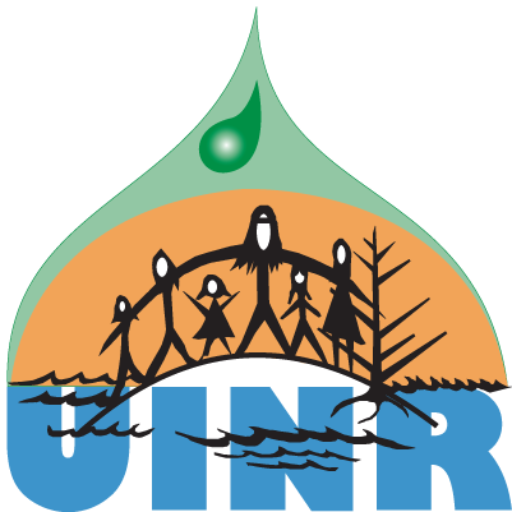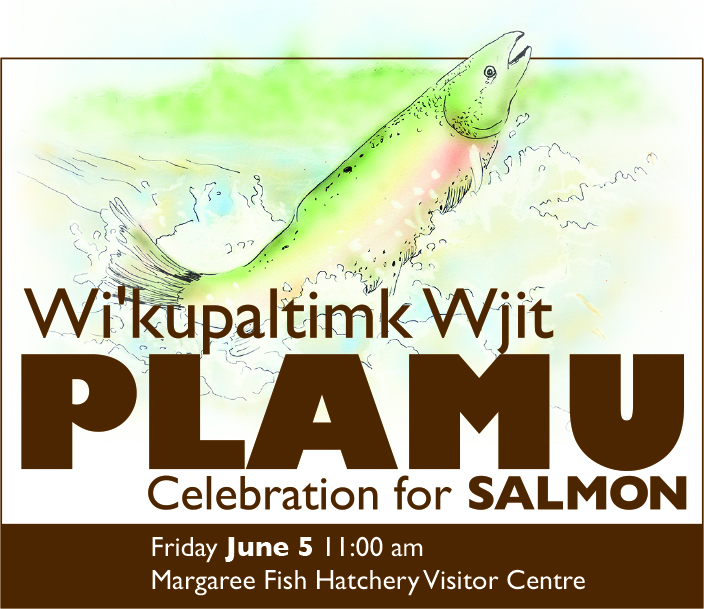Wi’kupaltimk Wjit Plamu is a new exhibit that showcases the celebration of Plamu (Salmon) and its relationship with the Mi’kmaq people.
On Friday, June 5 at 11:00 am, UINR (Unama’ki Institute of Natural Resources,) MELC (Mi’kmaq Environmental Learning Centre,) and Nova Scotia Department of Fisheries and Aquaculture’s Margaree Fish Hatchery unveil a new exhibit at the Margaree Fish Hatchery’s Visitor Centre.
The exhibit, featuring artwork by Dozay and unique hand-crafted Plamu by Mary Julia Francis, promotes Mi’kmaq culture through an engaging, comprehensive, and educational display on the cultural significance of the Atlantic Salmon to Mi’kmaq people.
Lisa Young, UINR’s Executive Director says, “Among the goals of MELC and UINR are to collect and preserve traditional Mi’kmaq knowledge on environmental sustainability, create and deliver educational programs to promote and share our traditional knowledge, and partner with other groups sharing the desire to promote environmental sustainability for the benefit of future generations.
“Plamu are a culturally significant species and we have harvested them since time immemorial. For the Mi’kmaq, Plamu harvesting took place in many rivers and barachois in the Bras d’Or Lakes watershed and around Unama’ki (Cape Breton). The Hatchery recognizes that the Mi’kmaq have a long standing relationship with Plamu and this new exhibit expands our presence there, while providing an engaging display.”
The Margaree Fish Hatchery was established in 1902. They raise Atlantic Salmon and Brook Trout to stock the Margaree Watershed and are instrumental in maintaining the health of the Margaree River, the first river in the Maritimes to be designated a Canadian Heritage River.
MELC recognizes the support of the Province of Nova Scotia through the Department of Communities, Culture and Heritage. We are pleased to work in partnership with the Province of Nova Scotia to develop and promote our cultural resources for all Nova Scotians.

